
Deutsch-Chinesische Enzyklopädie, 德汉百科
 Kiel Canal
Kiel Canal

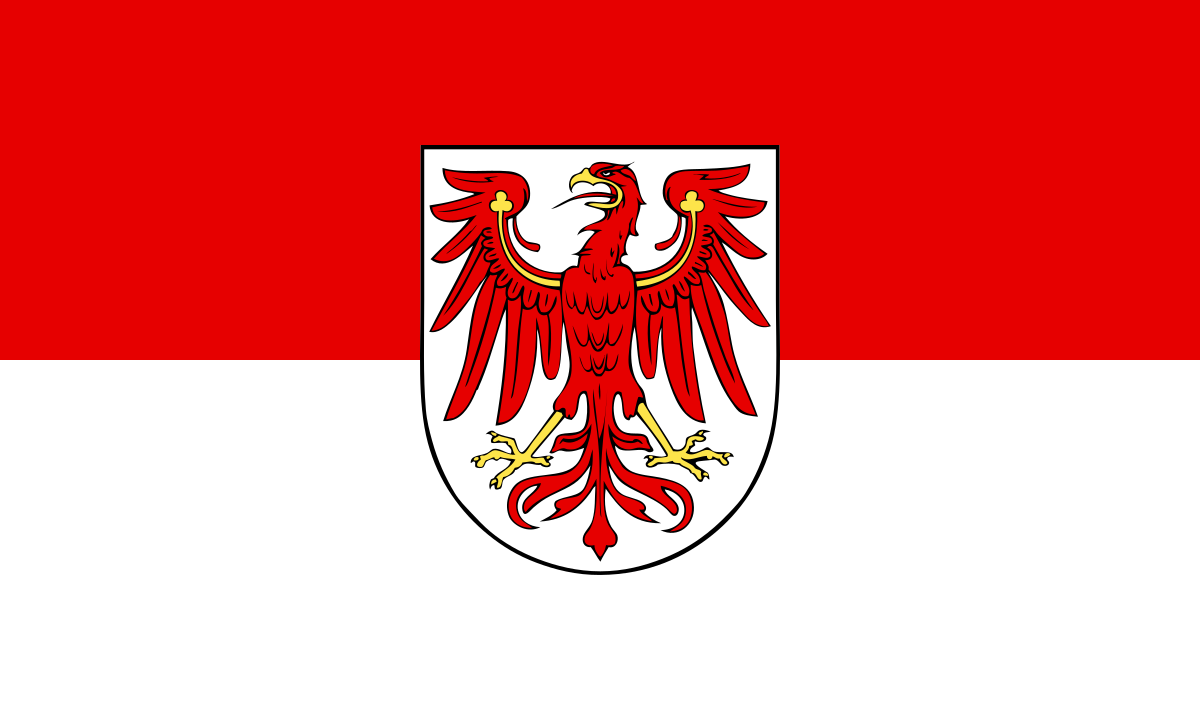 Brandenburg
Brandenburg
 Germany
Germany
 Elbe
Elbe

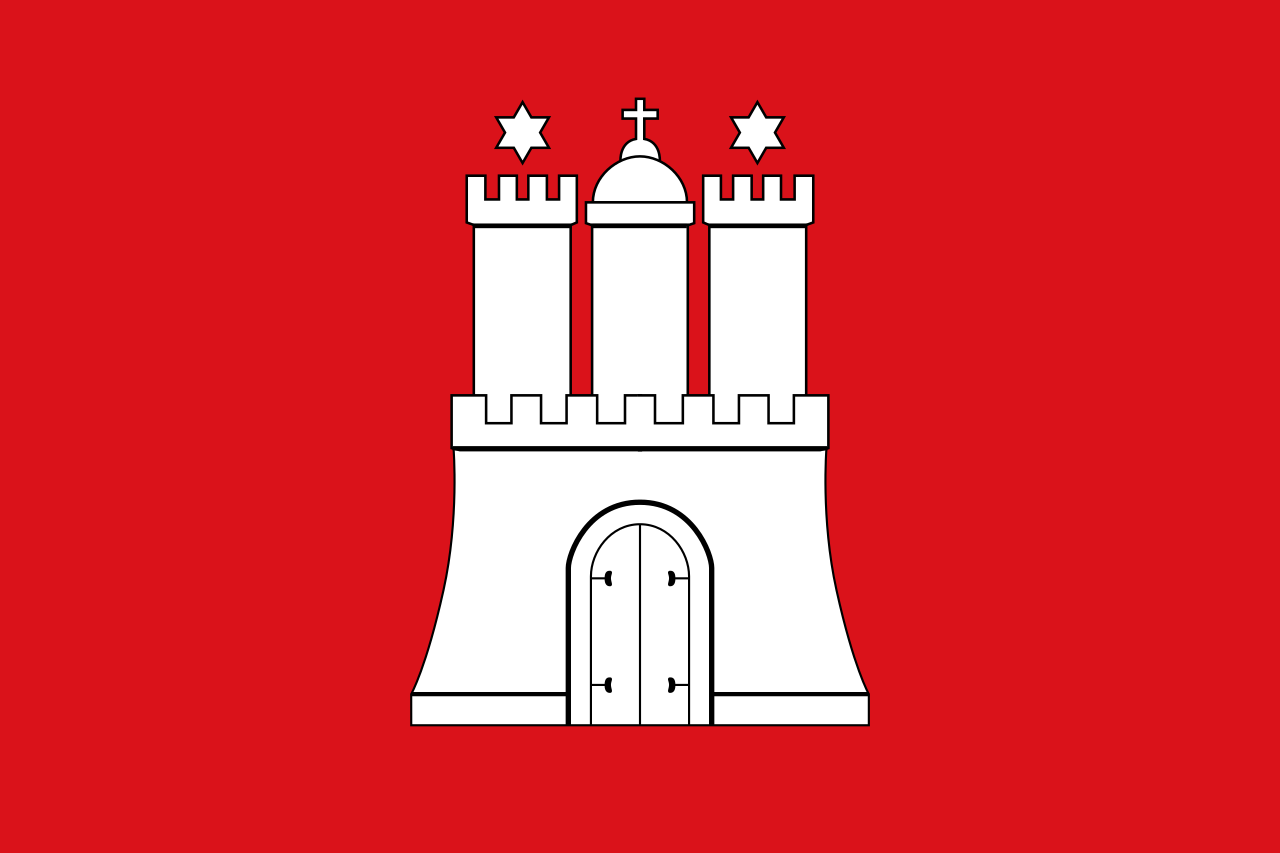 Hamburg
Hamburg

 Mecklenburg-Vorpommern
Mecklenburg-Vorpommern
 Vltava
Vltava

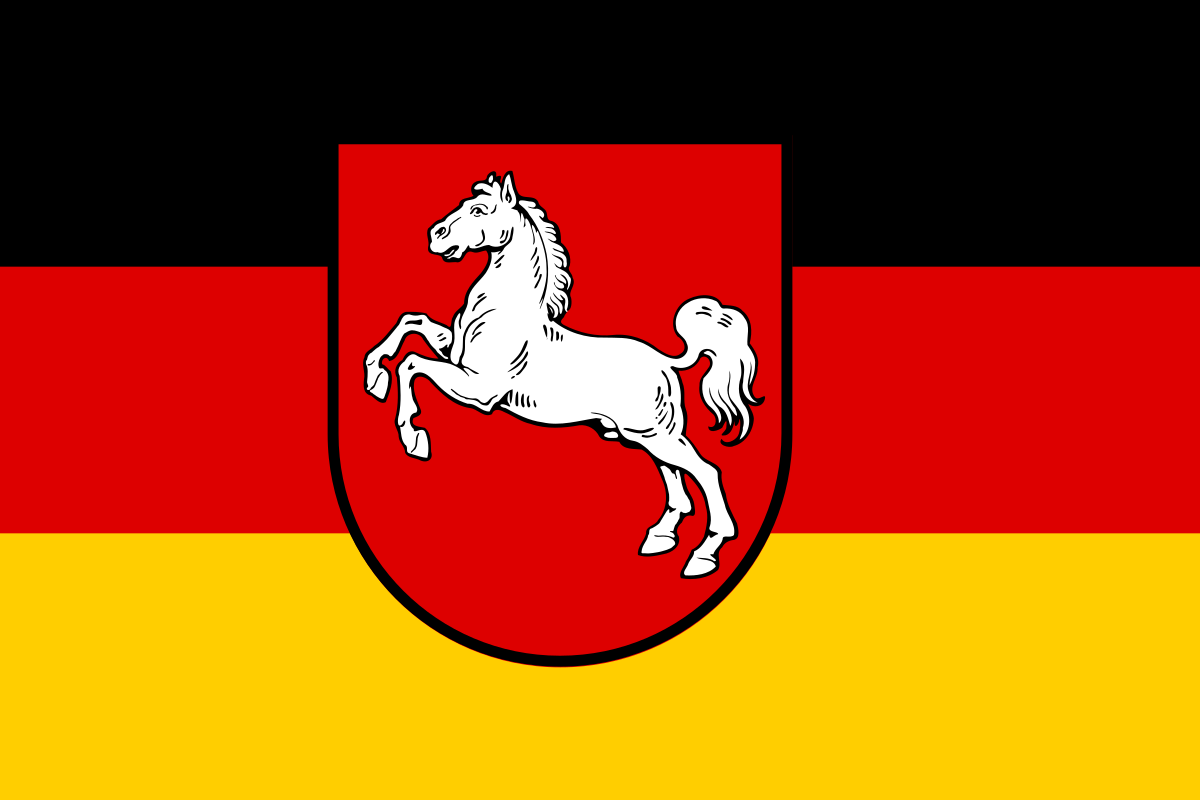 Lower Saxony
Lower Saxony
 Kiel Canal
Kiel Canal
 Austria
Austria
 Poland
Poland

 Saxony
Saxony

 Saxony-Anhalt
Saxony-Anhalt

 Schleswig-Holstein
Schleswig-Holstein
 Czech Republic
Czech Republic

 Vacation and Travel
Vacation and Travel
易北河发源于捷克和波兰交接的苏台德山脉,向南进入捷克,再流成一个弧形转向西北流入德国,经汉堡流入北海。
易北河(德语:Elbe)在捷克语和波兰语中称为“拉贝河”(Labe,Łaba),都是由古斯堪的纳维亚语的“河流”一词演变来的。易北河发源于捷克和波兰交接的苏台德山脉,向南进入捷克,再流成一个弧形转向西北流入德国,经汉堡流入北海,是中欧地区的主要航运河道。
易北河从河源到德国的德累斯顿为上游,在山地中河流湍急,由许多小支流汇合而成,在接近德捷边境时河宽达140米,然后穿越一个狭窄的峡谷进入德国的平原地区。河宽达430米,到了汉堡以下为下游,河流宽达14.5公里,海轮可以经过宽阔的河道航行109公里直接到达汉堡,通过中德运河向西到达鲁尔工业区,向东到达柏林。700吨的货轮可以上溯到捷克,较小的船可以经由其支流到达布拉格。
易北河的年平均流量变化较大,1926年到1965年期间,最大流量达3617秒立方米,最小只有145秒立方米,因此给航运带来一定的不利影响。由于下游水位低,海潮可以直接到达汉堡,当有风暴时,洪水可以淹没汉堡部分市区。易北河的沿岸分布着许多欧洲重要的城市。
Die (niederdeutsch Elv, tschechisch Labe, lateinisch Albis) ist ein mitteleuropäischer Strom, der in Tschechien entspringt, durch Deutschland fließt und in die Nordsee mündet. Sie ist der einzige Fluss, der das von Mittelgebirgen umschlossene Böhmen zur Nordsee hin entwässert. Zu den bekanntesten Gewässern ihres Einzugsgebietes gehören die Moldau, die Saale, die Havel mit der Spree und die Elde mit der Müritz. Im Oberlauf durch die Mittelgebirge geprägt, folgt sie im weiteren Verlauf zwei Urstromtälern des Norddeutschen Tieflandes.
Gemessen an der Größe ihres Einzugsgebietes von 148.300 km² liegt sie für Mitteleuropa gemäß Liste der Flüsse in Europa an vierter Stelle hinter der Donau, der Weichsel und dem Rhein, gefolgt von Oder und Memel.[6]
エルベ川(エルベがわ、ポーランド語: Łaba、チェコ語: Labe、ドイツ語: Die Elbe、低ザクセン語: De Elv)は、チェコ北部およびドイツ東部を流れ北海へと注ぐ国際河川である。全長約1,091kmはヨーロッパでは14番目に長く、このうち727kmがドイツ国内を占める。
ポーランド、チェコ国境地帯のズデーテン山地に源を発し、チェコ北部、ドイツ東部を北へ流れ、ハンブルク付近で北海に注ぐ。
ハンブルク南東付近にはエルベ・リューベック運河が延び、バルト海南西部リューベック湾との間を結んでいる。河口付近にはキール運河があり、バルト海のキール湾に接続している。
The Elbe (/ˈɛlbə/; Czech: ![]() Labe (help·info) [ˈlabɛ]; German: Elbe [ˈɛlbə]; Low German: Elv, historically in English also Elve[1][2][3]) is one of the major rivers of Central Europe. It rises in the Krkonoše Mountains of the northern Czech Republic before traversing much of Bohemia (Czech Republic), then Germany and flowing into the North Sea at Cuxhaven, 110 km (68 mi) northwest of Hamburg. Its total length is 1,094 kilometres (680 mi).[4]
Labe (help·info) [ˈlabɛ]; German: Elbe [ˈɛlbə]; Low German: Elv, historically in English also Elve[1][2][3]) is one of the major rivers of Central Europe. It rises in the Krkonoše Mountains of the northern Czech Republic before traversing much of Bohemia (Czech Republic), then Germany and flowing into the North Sea at Cuxhaven, 110 km (68 mi) northwest of Hamburg. Its total length is 1,094 kilometres (680 mi).[4]
The Elbe's major tributaries include the rivers Vltava, Saale, Havel, Mulde, Schwarze Elster, and Ohře.[4]
The Elbe river basin, comprising the Elbe and its tributaries, has a catchment area of 148,268 square kilometres (57,247 sq mi), the fourth largest in Europe. The basin spans four countries, with its largest parts in Germany (65.5%) and the Czech Republic (33.7%). Much smaller parts lie in Austria (0.6%) and Poland (0.2%). The basin is inhabited by 24.4 million people.[4]
L'Elbe (allemand Elbe, tchèque Labe, sorabe Łobjo) est un fleuve d'Europe centrale qui prend sa source en République tchèque dans les monts des Géants et, après un parcours situé en majeure partie en Allemagne, se jette dans la mer du Nord par un long estuaire d'une centaine de kilomètres sur lequel se trouve Hambourg, premier port d'Allemagne. La longueur de ce fleuve est de 1 091 kilomètres.
L'Elba (in tedesco: Elbe, in ceco: Labe) è uno dei fiumi più lunghi dell'Europa centrale (1165 Km). Nasce nel nord della Repubblica Ceca, nella catena montuosa dei Monti Sudeti, a circa 1 400 m di altezza. Attraversa quindi la Germania per sfociare poi nel Mare del Nord. La sua lunghezza totale è di 1 165 km.
El río Elba (en checo, Labe; en alemán, Elbe; en bajo alemán Elv; en latín, Albis) es uno de los principales ríos de la Europa central, el segundo más largo de los que desembocan en el mar del Norte, tras el Rin. Tiene una longitud de 1165 km (15.º más largo de Europa) y drena una cuenca de 148 268 km² (12.ª cuenca europea y 2.ª del mar del Norte) que corresponde a Alemania (65,5%), República Checa (33,7%), Austria (0,6%) y Polonia (0,2%). El sistema fluvial más largo de la cuenca corresponde al Elba–Moldava, con 1231 km.
El Elba nace en el norte de la República Checa, a 1386 m de altitud, en la vertiente meridional de los montañas de los Gigantes, y tras discurrir primero en dirección sureste y virar al noroeste, desemboca no lejos de Hamburgo en el mar del Norte.
Administrativamente, el río discurre por cuatro de las trece regiones de la República Checa —Hradec Králové, Bohemia Central, Pardubice y Ústí nad Labem— y cinco de los 16 estados federados de Alemania —Sajonia, Sajonia-Anhalt, Baja Sajonia, Schleswig-Holstein y Hamburgo—.
Las ciudades más importantes en su curso son las checas Hradec Králové (93 035 hab.), Pardubice (89 467 hab.), Ústí nad Labem (93 747 hab.) y Děčín (50 289 hab.) y las alemanas Dresde (525 105 hab.), Dessau (85 488 hab.), Magdeburgo (229 924 hab.), Hamburgo (1 734 272 hab.) y Cuxhaven (50 846 hab.).
Sus principales afluentes son los ríos Moldava (434 km), Saale (413 km), Havel (413 km), Ohře (316 km), Elster Negro (181 km) y Mulda (147 km).1
La cuenca del Elba está habitada por 24,5 millones de personas.1
Э́льба (нем. Elbe, н.-нем. Elv, лат. Albis) или Ла́ба (чеш. Labe, в.-луж. и н.-луж. Łobjo) — река бассейна Северного моря. Берёт начало в Чехии, основное течение на территории Германии. Длина реки — 1165 км[1]. Площадь водосборного бассейна — 148 000 км²[1]. Среднемноголетний расход воды при впадении в море — 861 м³/с[1].
Дрезденская долина Эльбы со знаменитой террасой Брюля в силу своей редкой живописности в 2004—2009 входила в список Всемирного наследия человечества.

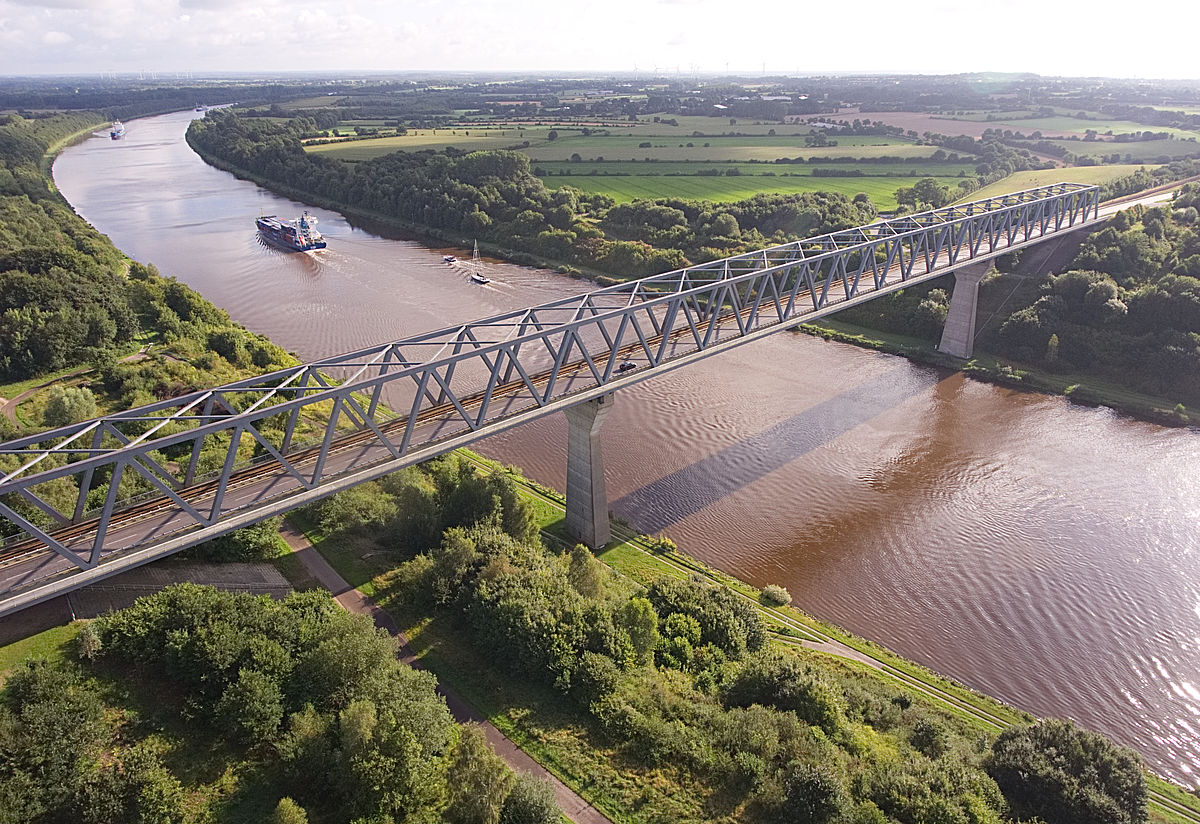

 Germany
Germany
 Hansestadt
Hansestadt
 Kiel Canal
Kiel Canal

 Schleswig-Holstein
Schleswig-Holstein

 Sport
Sport
 The Ocean Race
The Ocean Race

 Vacation and Travel
Vacation and Travel

 Important port
Important port

德国北部港市,石勒苏益格-荷尔斯泰因州首府。在基尔运河东口。距海口11公里。面积118.4平方千米,人口233,244人(2005年)。1242 年建市,1284年加入汉萨同盟。十九世纪后半叶成为军港。重要的海军基地。随基尔运河的开凿,经济迅速发展。铁路枢纽。渔业基地。工业以造船和机械制造 为主,造船业仅次于汉堡。此外有水产加工、化学、冶金、酿酒等部门。
邻靠于波罗的海基尔湾,自十九世纪六十年代以来该市一直是德国主要的海军基地。基尔是德国造船业中心,基尔运河的东段终点。基尔还有一所重要的大学 :基尔大学。
基尔在第二次世界大战中被严重摧毁,战後重建时,城市规划者们未能找到原来的设计图纸,因而很可惜地无缘像石勒苏益格-荷尔斯泰因的其他城镇,如吕贝克、弗兰斯堡或石勒苏益格等那样完全复原城市的原貌。
(Quelle: http://www.3i3i.cn/Touristtraffic/knowledge/200808/212680.html)

Der Nord-Ostsee-Kanal (NOK; internationale Bezeichnung Kiel Canal, in Deutschland bis 1948 Kaiser-Wilhelm-Kanal) verbindet die Nordsee (Elbmündung) mit der Ostsee (Kieler Förde). Diese Bundeswasserstraße[3] ist die weltweit meistbefahrene künstliche Wasserstraße für Seeschiffe.[4] Im Jahr 2016 passierten ihn 29.284 Schiffe[5] (2015: 32.091[6], 2014: 32.589[7], 2013: 31.097, 2012: 34.879, 2011: 33.522[8]).
Der Kanal durchquert mit einer Länge von knapp 100 Kilometern das Land Schleswig-Holstein zwischen Brunsbüttel und Kiel-Holtenau. Damit erspart er die Fahrt um die Kimbrische Halbinsel (Jütland) durch Nordsee, Skagerrak und Kattegat. Mit dem Kanal ist die Wegstrecke je nach Abfahrts- und Zielhafen im Schnitt 250 Seemeilen (rund 460 km) kürzer.
Die erste Verbindung zwischen Nord- und Ostsee für seegängige Schiffe war der 1784 in Betrieb genommene und 1853 in Eiderkanal umbenannte Schleswig-Holsteinische Canal.
キール運河(キールうんが、ドイツ語:Kiel‐Kanal)は、ユトランド半島を根元のドイツ北部シュレースヴィヒ=ホルシュタイン州で横断し、北海とバルト海を繋ぐ運河。正式名称は北海バルト海運河(Nord‐Ostsee‐Kanal)。
長さ98 km、幅102 m、水深11 mである。北海とバルト海の海面の間に高度差は少ないが、潮の満ち干に対応するための閘門(こうもん)が運河の両端にある。
日本では、スエズ運河・パナマ運河と並び、世界三大運河とよばれる。
The Kiel Canal (German: Nord-Ostsee-Kanal, literally "North-[to]-Baltic Sea canal", formerly known as the Kaiser-Wilhelm-Kanal) is a 98-kilometre (61 mi) long freshwater canal in the German state of Schleswig-Holstein. The canal was finished in 1895, but later widened, and links the North Sea at Brunsbüttel to the Baltic Sea at Kiel-Holtenau. An average of 250 nautical miles (460 km) is saved by using the Kiel Canal instead of going around the Jutland Peninsula. This not only saves time but also avoids storm-prone seas and having to pass through the Sound or Belts.
Besides its two sea entrances, the Kiel Canal is linked, at Oldenbüttel, to the navigable River Eider by the short Gieselau Canal.[1]
Le canal de Kiel (allemand : Nord-Ostsee-Kanal), est un canal de 98 kilomètres qui relie la mer du Nord (à Brunsbüttel) à la mer Baltique (à Kiel). En traversant la péninsule du Jutland, le canal permet un raccourci de 280 milles nautiques (519 km). Avec plus ou moins 120 bateaux par jour en moyenne, il est une des voies d'eau non naturelles les plus fréquentées au monde1.
Il canale di Kiel (in tedesco Nord-Ostsee Kanal o NOK) è un canale artificiale in Germania settentrionale; lungo 98 chilometri, si trova alla base della penisola dello Jutland e, procedendo in direzione nordest-sudovest, collega le città di Kiel, sul mar Baltico, e Brunsbüttel sul mare del Nord.
Il canale, tramite il quale si evita la circumnavigazione della penisola dello Jutland permettendo un risparmio di 280 miglia nautiche (519 km), è la via d'acqua più utilizzata al mondo.
Il primo collegamento tra i due mari era l'Eiderkanal che utilizzava il fiume Eider. Fu completato nel 1784 e misura 43 chilometri sui 175 chilometri del tragitto tra Kiel e l'imboccatura dell'Eider (a Tönning). Era largo 29 metri e profondo 3 metri cosa che limitava la grandezza dei battelli a circa 300 tonnellate.
La marina tedesca volle collegare le sue basi nel Baltico e nel mare del Nord senza fare il giro della Danimarca. La costruzione del nuovo canale fu decisa.
Nel giugno 1887, la costruzione cominciò a Holtenau nei pressi di Kiel. In otto anni, circa 9000 uomini lavorarono alla sua costruzione. Il 20 giugno 1895 il canale è ufficialmente inaugurato dal Kaiser Guglielmo II. Durante la cerimonia pose l'ultima pietra dell'opera e lo chiamò Kaiser-Wilhelm-Kanal in onore di suo nonno Guglielmo I. Mantenne tale nome sino al 1948.
In seguito all'aumento del traffico la parte del canale che permette l'incrocio dei battelli fu ingrandita tra il 1907 e il 1914. Due chiuse furono aggiunte a Brunsbüttel e a Holtenau.
Dopo la prima guerra mondiale, il trattato di Versailles internazionalizza il canale lasciandolo sotto amministrazione tedesca. Adolf Hitler annullò lo statuto internazionale nel 1936.
Dopo la fine della Seconda guerra mondiale, il canale è di nuovo aperto a tutte le imbarcazioni. Esso è stato chiuso, per la prima volta nella sua storia (compresa la seconda guerra mondiale), nel 2013, a causa della mancanza di manutenzione dovuta a un forte taglio agli investimenti sulle infrastrutture avvenuto nel 2012[1].
Se ahorran de promedio unas 250 millas náuticas (460 km) utilizando el canal, en lugar de bordear la península de Jutlandia. Esto no sólo ahorra tiempo, sino que también evita las potencialmente peligrosas tormentas habituales en esos mares. Según el sitio web del canal, es la vía marítima artificial más utilizada en el mundo, habiendo sido cruzado en 2007 por más de 43 000 barcos, sin contar las pequeñas embarcaciones.3
Además de sus dos entradas marinas, el canal está conectado, en Oldenbüttel, con el navegable río Eider por el corto canal de Gieselau.4
Кильский канал (нем. Nord-Ostsee-Kanal), до 1948 года Канал кайзера Вильгельма (нем. Kaiser-Wilhelm-Kanal) — судоходный канал в Германии, соединяющий Балтийское и Северное моря. Проходит от Кильской бухты, у города Киль (пригородный район Хольтенау) до устья реки Эльба, у города Брунсбюттель[1].
Протяжённость — около 98 км, ширина — более 100 м, глубина — 11 м. Канал оканчивается парой шлюзов с каждой стороны, один из них предназначен для маломерного флота.
Кильский канал был введён в эксплуатацию 20 июня 1895 года, строительство продолжалось 8 лет. Является одним из самых загруженных судоходных путей Европы. Этот путь экономит около 519 километров по сравнению с плаванием вокруг Ютландского полуострова. При этом канал не только сокращает время пути примерно на сутки, но и позволяет избегать морских штормов.
 Belgium
Belgium
 Amber Road
Amber Road

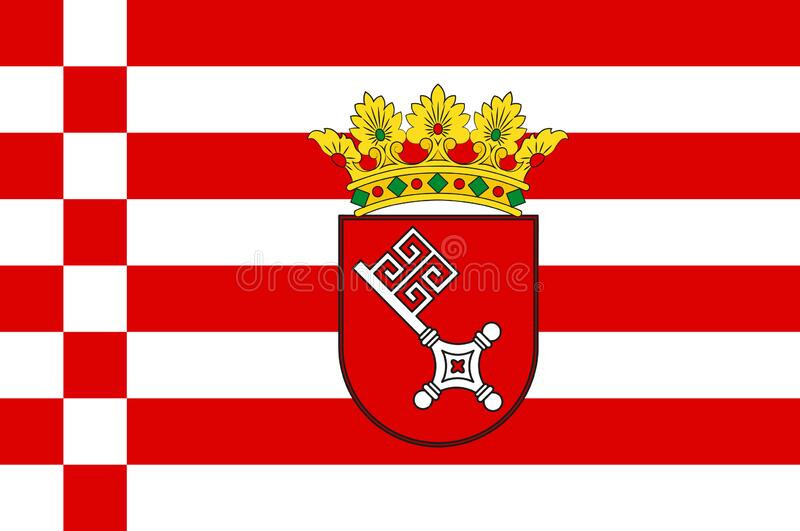 Bremen
Bremen
 Denmark
Denmark
 Germany
Germany
 England
England
 France
France

 Geography
Geography
 Netherlands
Netherlands

 Lower Saxony
Lower Saxony
 Kiel Canal
Kiel Canal
 Norwegen
Norwegen

 Schleswig-Holstein
Schleswig-Holstein
 Sweden
Sweden
 United Kingdom
United Kingdom

北海(挪威语:Nordsjøen;瑞典语:Nordsjön;丹麦语:Nordsøen或Vesterhavet;德语:Nordsee;荷兰语:Noordzee;法语:Mer du Nord;英语:North Sea)是北大西洋的一部分,位于大不列颠岛以东,斯堪的纳维亚半岛西南和欧洲大陆以北。北海海底有丰富的石油储藏,作为布兰特原油指数的基础。
北海向西南通过多佛尔海峡(法国称加来海峡)和英吉利海峡(法国称拉芒什海峡)与凯尔特海相通,向东通过斯卡格拉克海峡和卡特加特海峡与波罗的海相连,向北是挪威海。
斯凯尔特河、默兹河、莱茵河、威悉河、易北河和泰晤士河是注入北海的主要河流。重要的岛屿或群岛有北弗里西亚群岛、黑尔戈兰岛、东弗里西亚群岛和西弗里西亚群岛。
北海周边的国家有英国、挪威、瑞典、丹麦、德国、荷兰、比利时和法国。重要城市有阿伯丁、爱丁堡、加来、奥斯坦、鹿特丹、海牙、哈勒姆、威廉港、不来梅哈芬、库克斯港、埃斯比约、卑尔根、哥德堡等等。此外伦敦、不来梅哈芬和汉堡是北海重要的内陆港城。
Die Nordsee (veraltet Westsee, Deutsches Meer[2]) ist ein Randmeer des Atlantischen Ozeans. Sie ist ein Schelfmeer und liegt im nordwestlichen Europa. Bis auf die Meerengen beim Ärmelkanal und beim Skagerrak ist sie auf drei Seiten von Land begrenzt und öffnet sich trichterförmig zum nordöstlichen Atlantik. In einem 150-Kilometer-Bereich an der Küste leben rund 80 Millionen Menschen.
Die Nordsee selbst ist ein wichtiger Handelsweg und dient als Weg Mittel- und Nordeuropas zu den Weltmärkten. Die südliche Nordsee ist zusammen mit dem angrenzenden Ärmelkanal die am dichtesten befahrene Schifffahrtsregion der Welt. Unter dem Meeresboden befinden sich größere Erdöl- und Erdgasreserven, die seit den 1970er Jahren gefördert werden. Kommerzielle Fischerei hat den Fischbestand des Meeres in den letzten Jahrzehnten vermindert. Umweltveränderungen entstehen auch dadurch, dass die Abwässer aus Nordeuropa und Teilen Mitteleuropas direkt oder über die angrenzende Ostsee in das Meer fließen.
北海(ほっかい、英語 North Sea、ドイツ語 Nordsee、フランス語 Mer du Nord、オランダ語 Noordzee、デンマーク語 Nordsøen、ノルウェー語 Nordsjøen)は、大西洋の付属海。古名はゲルマン海(ラテン語 Mare Germanicum、英語 German Ocean)。
東はノルウェー、デンマーク、南はドイツ、オランダ、ベルギー、フランス、西はイギリス、北はオークニー諸島・シェトランド諸島に囲まれている。東はスカゲラク海峡・カテガット海峡およびキール運河でバルト海に、北はノルウェー海に、南はドーバー海峡・イギリス海峡で大西洋に繋がっている。南北の長さは970km、東西は580km、面積は75万km2、水量は94000km3である[1]。
北海に流れ込む主な川はエルベ川、ヴェーザー川、エムス川、ライン川などがある。なかでも、最も北海に影響を及ぼす河川はエルベ川とライン川・ムーズ川である[2]。北海の集水域にはおよそ1億8500万人が暮らしており、また世界で最も工業化された地方のうちのひとつが含まれている[3]。
北海油田と総称される油田・ガス田が多数あり、ヨーロッパの貴重なエネルギー源である。
The North Sea is a sea of the Atlantic Ocean located between Great Britain (England and Scotland), Denmark, Norway, Germany, the Netherlands, Belgium and France. An epeiric (or "shelf") sea on the European continental shelf, it connects to the ocean through the English Channel in the south and the Norwegian Sea in the north. It is more than 970 kilometres (600 mi) long and 580 kilometres (360 mi) wide, with an area of 570,000 square kilometres (220,000 sq mi).
The North Sea has long been the site of important European shipping lanes as well as a major fishery. The coast is a popular destination for recreation and tourism in bordering countries, and more recently the sea has developed into a rich source of energy resources, including fossil fuels, wind, and early efforts in wave power.
Historically, the North Sea has featured prominently in geopolitical and military affairs, particularly in Northern Europe. It was also important globally through the power northern Europeans projected worldwide during much of the Middle Ages and into the modern era. The North Sea was the centre of the Vikings' rise. Subsequently, the Hanseatic League, the Dutch Republic, and the British each sought to gain command of the North Sea and thus access to the world's markets and resources. As Germany's only outlet to the ocean, the North Sea continued to be strategically important through both World Wars.
The coast of the North Sea presents a diversity of geological and geographical features. In the north, deep fjords and sheer cliffs mark the Norwegian and Scottish coastlines, whereas in the south, the coast consists primarily of sandy beaches and wide mudflats. Due to the dense population, heavy industrialization, and intense use of the sea and area surrounding it, there have been various environmental issues affecting the sea's ecosystems. Adverse environmental issues – commonly including overfishing, industrial and agricultural runoff, dredging, and dumping, among others – have led to a number of efforts to prevent degradation of the sea while still making use of its economic potential.
La mer du Nord est une mer épicontinentale de l'océan Atlantique, située au nord-ouest de l'Europe, et qui s'étend sur une superficie d'environ 575 000 km2.
Les pays qui bordent la mer du Nord sont le Royaume-Uni (île de Grande-Bretagne) à l'ouest ; les îles Shetland et Orcades au nord-ouest ; la Norvège au nord-est; le Danemark à l'est ; l'Allemagne au sud-est ; enfin les Pays-Bas, la Belgique et la France (pour 50 km de littoral entre Calais et la frontière belge) au sud. Elle communique avec la Manche par le pas de Calais au sud-sud-ouest ; avec l'océan Atlantique au nord-ouest et la mer de Norvège au nord ; avec le Skagerrak à l'est. Le canal de Kiel permet aux navires de rejoindre la mer Baltique.
Elle constitue une zone de fort transit maritime, d'exploitation pétrolière et de pêche. La mer du Nord et son littoral forment un milieu naturel très riche, mais la pollution marine, la surpêche, l'industrie pétrolière (plates-formes offshore) et le tourisme sont sources de menaces pour l'avenir. Elle est en aval du centre de l'Europe industrielle, de l'estuaire du Rhin aux fjords norvégiens et aux falaises du nord de la Grande-Bretagne. Le secteur Manche/Sud-mer du Nord, incluant le pas de Calais est considéré comme représentatif de mers mégatidales peu profondes, caractérisées par un fort courant et une eau très turbide (en raison des courants et phénomènes de renversement de marées), ce qui en fait une zone écologiquement particulière, mais également vulnérable au risque maritime en raison d'un intense trafic maritime (marchand et passager).
Il mare del Nord (in danese Nordsøen; in francese Mer du Nord; in inglese North Sea; in norvegese Nordsjøen;in olandese Noordzee; in svedese Nordsjön; in tedesco Nordsee) è un mare epicontinentale dell'Europa nord-occidentale che comunica con l'oceano Atlantico tramite il mare di Norvegia a nord e la Manica a sud; suo tributario è il Mar Baltico, ad esso collegato tramite gli stretti scandinavi di Skagerrak e Kattegat. Si estende per circa 970 km di lunghezza in direzione nord-sud e 560 km di larghezza in direzione est-ovest, e ha una superficie totale di circa 570000 km²[1]. Accoglie una considerevole parte dei bacini idrografici dell'Unione europea.
El mar del Norte es un mar marginal del océano Atlántico, situado entre las costas de Noruega y Dinamarca en el este, las de las islas británicas al oeste y las de Alemania, los Países Bajos, Bélgica y Francia al sur. El Skagerrak constituye una especie de bahía al este del mar, la cual lo conecta con el Báltico a través del Kattegat; también está conectado con el Báltico mediante el canal de Kiel. El canal de la Mancha lo conecta al resto del Atlántico por el sur, mientras que por el norte conecta en través del mar de Noruega, que es el nombre que adopta el mar al norte de las islas Shetland.
Las mareas son bastante irregulares ya que confluyen en él una corriente proveniente del norte y otra del sur. Hay mucha lluvia y niebla durante todo el año, y del noroeste vienen violentas tormentas que hacen la navegación peligrosa.
Tiene una superficie de unos 750 000 km²,1 una longitud aproximada de 960 km y una anchura máxima de 480 km. Es un mar muy poco profundo, con una profundidad media de 95 metros: el hecho que en el banco Dogger, en medio del mar y a una profundidad de unos 25 metros, se hayan encontrado restos de mamuts prueba que durante la última glaciación o bien estaba cubierto de hielo o bien estaba emergido. Con el deshielo, el banco se convirtió en una especie de último reducto en forma de isla.
Durante la Edad Antigua este mar se conocía como Oceanum o Mare Germanicum. El nombre actual se cree que surgió desde el punto de vista de las islas Frisias, desde donde quedaba totalmente al norte, y por oposición al mar del Sur (el mar de Frisia y el Zuiderzee, en los Países Bajos). A la larga, el nombre actual se acabó imponiendo, de manera que ya era predominante durante la Edad Moderna. En la citada Edad Moderna fue común llamar Mar del Norte o Mar del Nord a todo el océano Atlántico, siendo por contrapartida llamado «Mar del Sur» o «Mar del Sud» todo el océano Pacífico.
Según las lenguas oficiales de los estados que lo rodean, se denomina Mer du Nord, en francés; Noordzee, en neerlandés; Nordsee, en alemán; Nordsjön, en sueco; Nordsøen, en danés; Nordsjøen, en noruego; y North Sea en inglés. En frisón se dice Noardsee y en gaélico escocés A' Mhuir en Tuath.
Tiene importantes yacimientos de petróleo y gas natural, los cuales comenzaron a explotarse en los años 1970.
Се́верное мо́ре (ранее также Немецкое море[3]; фр. Mer du Nord, нем. Nordsee, нидерл. Noordzee, з.-фриз. Noardsee, англ. North Sea, норв. Nordsjøen, дат. Nordsøen или Vesterhavet) — мелководное шельфовое море Атлантического океана, омывающее берега северной Европы. Расположено между Британскими островами на западе, Ютландским, Скандинавским полуостровами на востоке и континентальной Европой на юге. Омывает берега Норвегии, Дании, Германии, Нидерландов, Бельгии, Франции и Великобритании.
Площадь — 750 тыс. км²[1]. Наибольшая глубина 725 м[2]. Более 2/3 моря имеет глубину менее 100 м; в южной части — отмели (банка Доггер и др.). Впадают крупные реки: Эльба, Везер, Рейн, Темза. Основные порты: Роттердам, Амстердам, Антверпен, Лондон, Гамбург, Осло, Берген[2].
Прибрежная мелководная часть на юге иногда выделяется под названием Ваттового моря.
 Amber Road
Amber Road
 Denmark
Denmark
 Germany
Germany
 Estonia
Estonia
 Finland
Finland

 Geography
Geography
 Latvia
Latvia
 Lithuania
Lithuania

 Mecklenburg-Vorpommern
Mecklenburg-Vorpommern
 Kiel Canal
Kiel Canal
 Poland
Poland
 Russia
Russia

 Schleswig-Holstein
Schleswig-Holstein
 Sweden
Sweden

波罗的海是中欧和北欧之间的陆间海,海域横贯北纬53度至北纬66度,东经10度至东经30度,介于斯堪的纳维亚半岛的瑞典部分、欧洲大陆和丹麦诸岛之间。
波罗的海由厄勒海峡、大贝尔特海峡和小贝尔特海峡注入卡特加特海峡,而后者则通过斯卡格拉克海峡注入北海,最后进入大西洋;此外它还通过白海运河同白海相连,通过基尔运河同北海相连。
波罗的海在北端与波的尼亚湾相邻,在东北端与芬兰湾相邻,在东端与里加湾相邻。这些海湾同样可以被看作是波罗的海的一部分。
Die Ostsee (auch Baltisches Meer, von lat. Mare Balticum, oder auch Baltische See genannt) ist ein 412.500 km²[2] großes und bis zu 459 m tiefes Binnenmeer in Europa und gilt als das größte Brackwassermeer der Erde, auch wenn in der westlichen Ostsee aufgrund des Wasseraustausches mit der Nordsee zumeist ein höherer Salz- und Sauerstoffgehalt beobachtet werden kann. Der Rauminhalt des Meeres beträgt rund 20.000 km³. Im Ostseeraum leben, je nachdem, wie weit man diese Region eingrenzt, zwischen 50 und 85 Millionen Menschen.[3]
バルト海(バルトかい、Baltic Sea)は、北ヨーロッパに位置する地中海。ヨーロッパ大陸とスカンディナビア半島に囲まれた海域である。ユーラシア大陸に囲まれた海域と説明されることもある[1]。
西岸にスウェーデン、東岸は、北から順にフィンランド、ロシア、エストニア、ラトビア、リトアニア、南岸は、東から西にポーランド、ドイツ、デンマークが位置する。
The Baltic Sea is a marginal sea of the Atlantic Ocean, enclosed by Finland, Sweden, Denmark, Estonia, Latvia, Lithuania, Russia, Poland, Germany and the North and Central European Plain.
The sea stretches from 53°N to 66°N latitude and from 10°E to 30°E longitude. A mediterranean sea of the Atlantic, with limited water exchange between the two bodies, the Baltic Sea drains through the Danish islands into the Kattegat by way of the straits of Øresund, the Great Belt, and the Little Belt. It includes the Gulf of Bothnia, the Bay of Bothnia, the Gulf of Finland, the Gulf of Riga, and the Bay of Gdańsk.
The Baltic Proper is bordered on its northern edge, at the latitude 60°N, by the Åland islands and the Gulf of Bothnia, on its northeastern edge by the Gulf of Finland, on its eastern edge by the Gulf of Riga, and in the west by the Swedish part of the southern Scandinavian Peninsula.
The Baltic Sea is connected by artificial waterways to the White Sea via the White Sea Canal and to the German Bight of the North Sea via the Kiel Canal.
La mer Baltique est une mer intracontinentale et intérieure de 364 800 km2 située dans le Nord de l'Europe et reliée à l'océan Atlantique par la mer du Nord. Elle communique au sud-ouest avec la mer du Nord par le Cattégat et le Skagerrak. Trois golfes principaux intègrent cet espace : le golfe de Botnie au nord, le golfe de Finlande à l'est et le golfe de Riga au sud-est.
Les pays riverains sont :
- la Suède à l'ouest et au nord ;
- la Finlande au nord-est ;
- la Russie (par le golfe de Finlande) et l'Estonie à l'est ;
- la Lettonie au sud-est ;
- la Lituanie, la Russie (à Kaliningrad) et la Pologne au sud;
- l'Allemagne et le Danemark au sud-ouest.
Ces pays riverains, ainsi que la mer proprement dite, font l'objet, depuis 2009, d'une « stratégie de la Commission européenne en faveur du développement de la région de la mer Baltique »1, incluant un effort de dépollution de la Baltique et un système commun de surveillance maritime.
Il mar Baltico è un mare interno dell'oceano Atlantico settentrionale e si trova nell'Europa nord-orientale, circondato dalla Penisola scandinàva (meno correttamente scandìnava)[1], dalla terraferma dell'Europa centrale e orientale e dalle Isole danesi. Sfocia nel Kattegat e nel mare del Nord passando attraverso le isole danesi in tre stretti, l'Øresund, il Piccolo Belt e il Grande Belt.
Sfociano nel mar Baltico cinque grandi fiumi: l'Oder, la Vistola, il Njemen, la Daugava (o Dvina Occidentale) e la Neva. Le coste del Baltico tendono a ghiacciare d'inverno specie in occasione di eventi meteorologici particolarmente freddi.
Viene indicato come "mare dell'Est" in diverse lingue dell'Europa continentale, precisamente in danese (Østersøen), tedesco (Ostsee), finlandese (Itämeri), olandese (Oostzee), norvegese (Østersjøen), e svedese (Östersjön). In estone viene invece chiamato "mare Occidentale" (Läänemeri). Oltre all'italiano, viene chiamato mar Baltico in francese (mer Baltique), inglese (Baltic Sea), polacco (Morze Bałtyckie), russo (Baltijskoe more, Балтийское море), lituano (Baltijos Jūra), lettone (Baltijas Jūra) e greco (Baltiké thálassa, Βαλτική Θάλασσα).
El mar Báltico (del latín: Mare Balticum) es un mar interior de agua salobre del norte de Europa abierto al mar del Norte y, finalmente, al océano Atlántico a través de los estrechos de Kattegat y Skagerrak. Los países que lo rodean son (empezando por la península Escandinava y siguiendo en sentido horario): Suecia, Finlandia, Rusia (óblast de Leningrado y Kaliningrado), Estonia, Letonia, Lituania, Polonia, Alemania y Dinamarca.
Su superficie es de 432 800 km² e incluye dos grandes golfos: el golfo de Finlandia, entre el sur de este país y Estonia, y el golfo de Botnia, entre la costa oriental de Suecia y el occidental de Finlandia. Geológicamente es muy joven: sólo existe desde el VI milenio a.C. Es muy poco profundo (la media es de 57 m; la profundidad máxima es de 459 m al norte de la isla sueca de Gotland), lo que, unida a la poca apertura al océano, hace la renovación de las aguas muy lenta y favorece los problemas de contaminación. Las mareas son de muy pequeña amplitud.
El mar Báltico es también, el mayor depósito de ámbar del mundo y, además, su calidad es de las mejores: de los veinte depósitos del mundo que hay de ámbar, se dice que el del mar báltico sólo es superado por los de México y la República Dominicana, siendo el que más ámbar de conífera produce y el de mejor calidad. De él se extraen de 500 a 800 millones de toneladas de ámbar.
La cuenca que drena al mar Báltico abarca la totalidad de algunos países ribereños como las repúblicas bálticas, Polonia y la región rusa de Kaliningrado. Además, estos ríos nacen en, o atraviesan territorios pertenecientes a otros países que, a pesar de no poseer costas, se comunican al mar por vía fluvial. Tal es el caso de la República Checa, Eslovaquia, Ucrania y Bielorrusia, quienes acaban aportando agua (indirectamente) al mar Báltico.
Балти́йское мо́ре (Варяжское[1], польск. Morze Bałtyckie, нем. Ostsee, н.-нем. Oostsee, швед. Östersjön, дат. Østersøen, фин. Itämeri, эст. Läänemeri, латыш. Baltijas jūra, лит. Baltijos jūra) — внутриматериковое море Евразии, расположенное в Северной Европе (частично омывает также берега Западной и Восточной Европы). Относится к бассейну Атлантического океана.
Крайняя северная точка Балтийского моря находится вблизи Северного полярного круга (65°40' с. ш.), крайняя южная — около города Висмара (53°45' с. ш.).
Крайняя западная точка расположена в районе Фленсбурга (9°10' в. д.), крайняя восточная — в районе Санкт-Петербурга (30°15' в. д.)
Площадь поверхности моря (без островов) — 415 тыс. км². Объём воды — 21,5 тыс. км³. Из-за огромного стока рек вода имеет низкую солёность и потому море является солоноватоводным. Является крупнейшим в мире морем с такой особенностью[2].
Участок континентальной коры, на котором лежит современное Балтийское море, является частью устойчивой Русской тектонической плиты (Фенносарматия). Как единый массив он сложился около 1,8 миллиарда лет назад и с тех пор пребывал в относительной стабильности. Бо́льшая часть территории, соответствующей дну современной Балтики, бо́льшую часть времени находилась выше уровня моря, хотя южная и восточная части этого пространства продолжительное время были покрыты мелководными шельфовыми морями, о чём свидетельствует мощный слой донных осадков в этих областях. Балтийский кратон образовался в южном полушарии, дрейфовал на запад, находясь в эдиакарии в районе Южного Полярного круга, а далее на север, пересёк экватор около 375 млн л. н., и около 30 миллионов лет назад уже приблизился к современному положению. В разное время он был составной частью различных материков (Нуна, Нена, Родиния, Протолавразия, Паннотия, Лавруссия, Пангея, Лавразия, Евразия), а некоторое время также отдельным материком Балтикой.
Примерно 40 миллионов лет назад, когда контуры северной, центральной и восточной Европы уже сложились на близких к современным широтах, на месте будущего Балтийского моря возникла долина реки Эридан, протекавшей в юго-западном направлении параллельно Скандинавским горам — то есть приблизительно так же, как будет расположено Балтийское море: исток брала в Лапландии, а сильно ветвистая дельта в районе современных Нидерландов впадала в древнее Северное море, и в области нынешнего Финского залива располагался крупный приток. С наступлением четвертичного оледенения, примерно 700 тыс. л. н. Эридан прекратил существование, поскольку его долина, как и вся северная Европа, скрылась под ледниковым щитом. По берегам Эридана росла тайга. После образования ледника смола хвойных деревьев превратилась в янтарь.
ности и другие параметры Литоринового моря стали близки к современным — начинается около 4 тысяч лет назад. Примерно в это же время возникает и Нева.




来自世界各地的船只在基尔运河上航行。它们都悬挂德国国旗,但并非所有船只都悬挂德国国旗。除了悬挂东道国国旗(德国国旗)外,这些船只还悬挂本国国旗。
Willkommen zur Flaggen-Parade am NOK: Durch den Nord-Ostsee-Kanal fahren Schiffe aus aller Herren Länder. Sie alle haben die deutsche Flagge gehisst – doch fahren nicht alle Schiffe unter deutscher Flagge. Neben der Gastlandflagge (in unserem Fall die deutsche Flagge) haben die Schiffe auch ihre Heimatflagge gehisst.
Hier haben wir für Sie die Flaggen der Schiffe im Nord-Ostsee-Kanal einmal zusammengestellt, damit Sie am Nord-Ostsee-Kanal immer wissen, woher ein Schiff gerade kommt. Die Schiffsbegrüßer an der Schiffsbegrüßungsanlage stellen Ihnen natürlich auch jedes Schiff mit Heimathafen und Hymne vor.
Zunächst einmal eine Statistik über die Größe der Handelsflotte der weltweit führenden Flaggenstaaten jeweils in Millionen Bruttoraumzahl (Stand: 12/2013; Quelle: Statista). Die Bruttoraumzahl (BRZ) bezeichnet die Größe eines Schiffes. Sie ergibt sich aus dem gesamten umbauten Raum. Gemessen wird hierbei der gesamte Inhalt aller geschlossenen Räume vom Schornstein bis zum Kiel-in Kubikmeter.
 Architecture
Architecture
 International cities
International cities
 Science and technology
Science and technology














